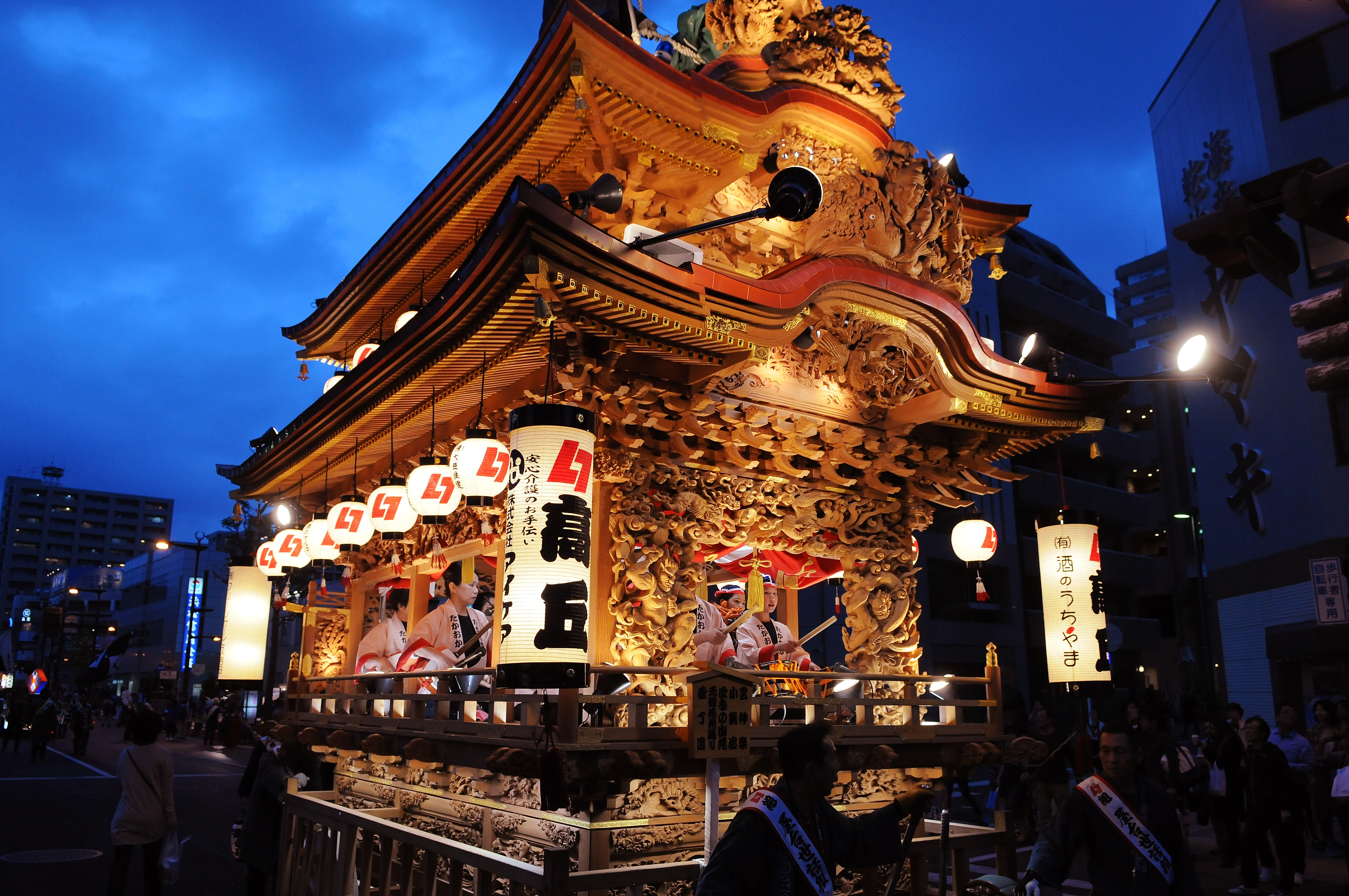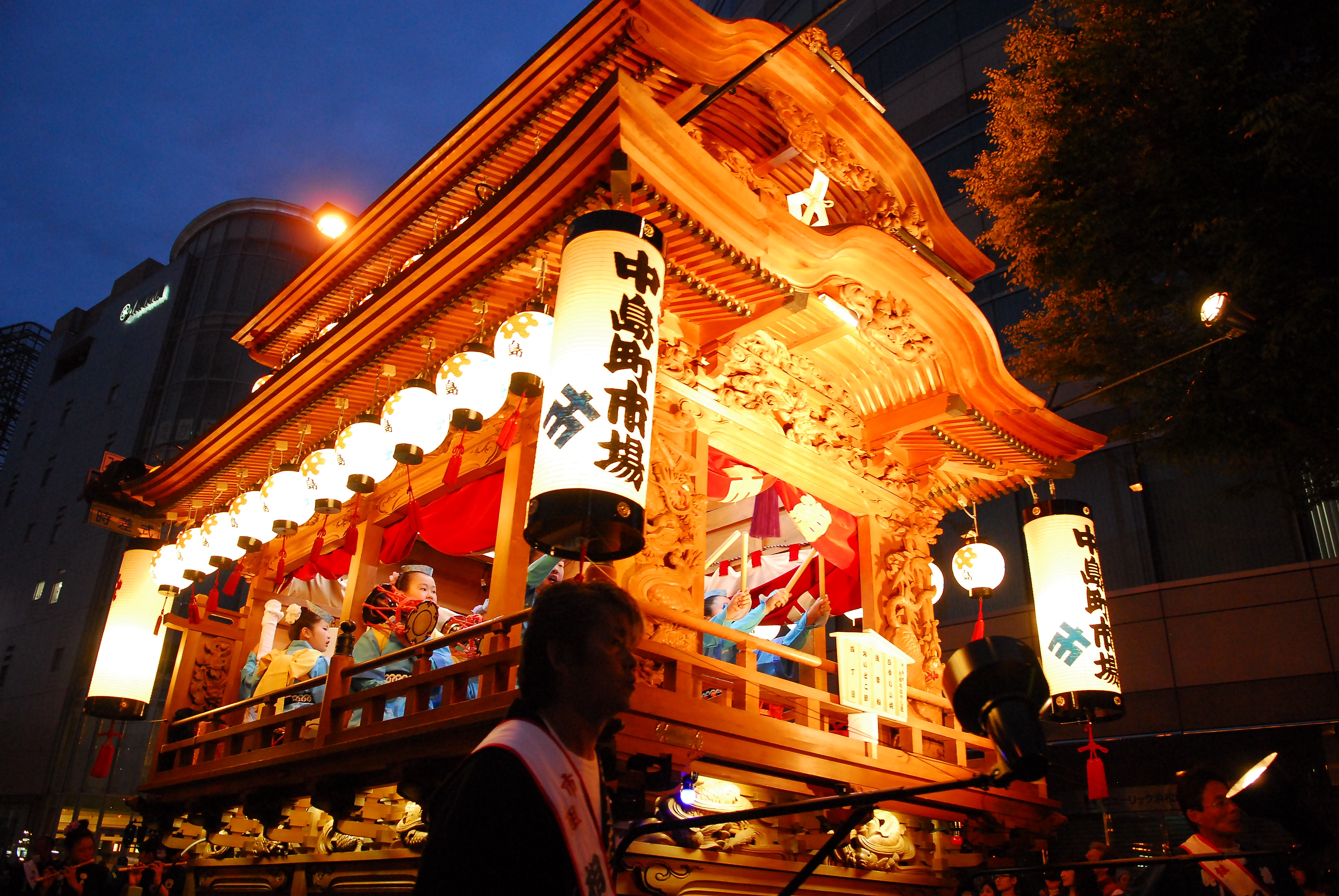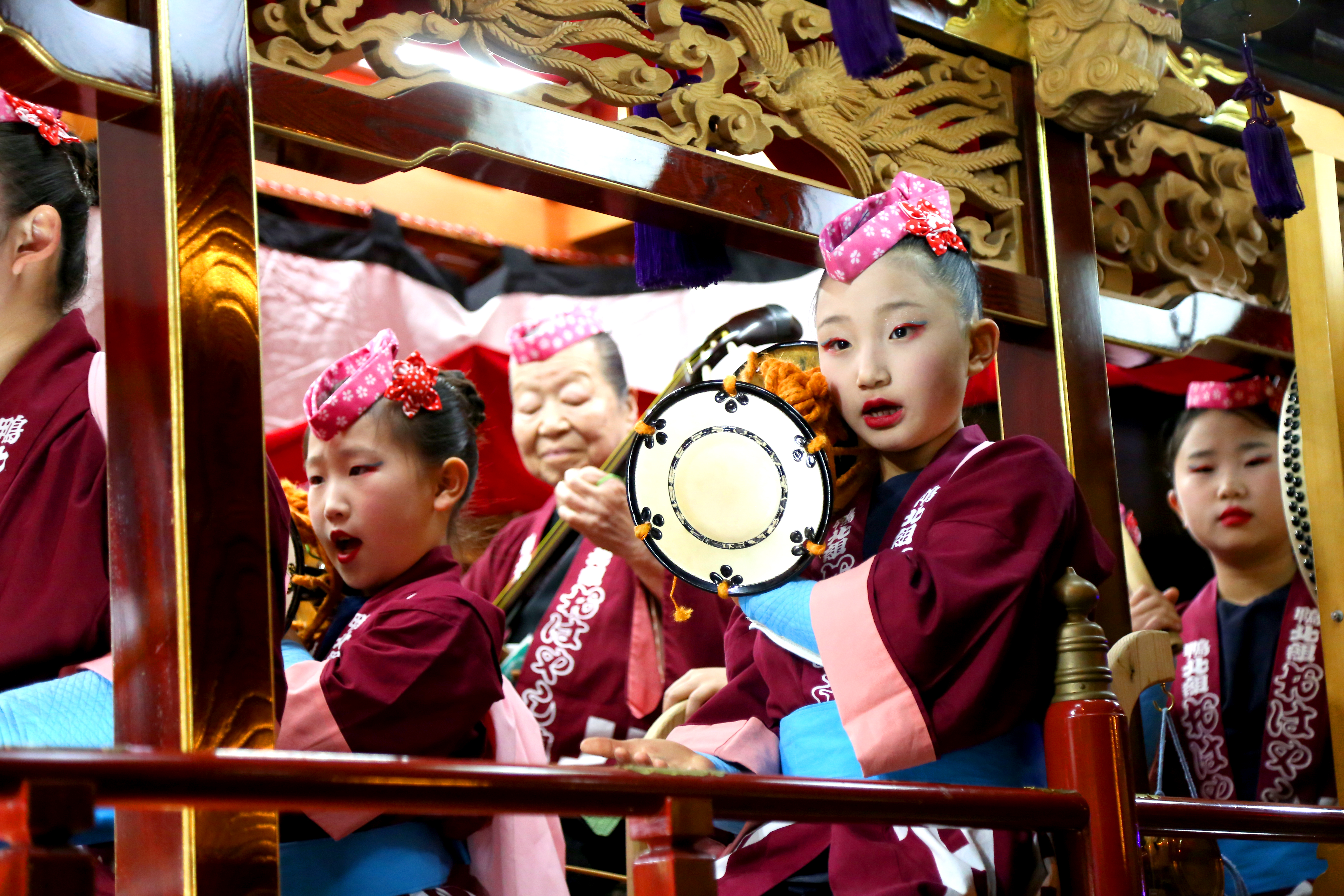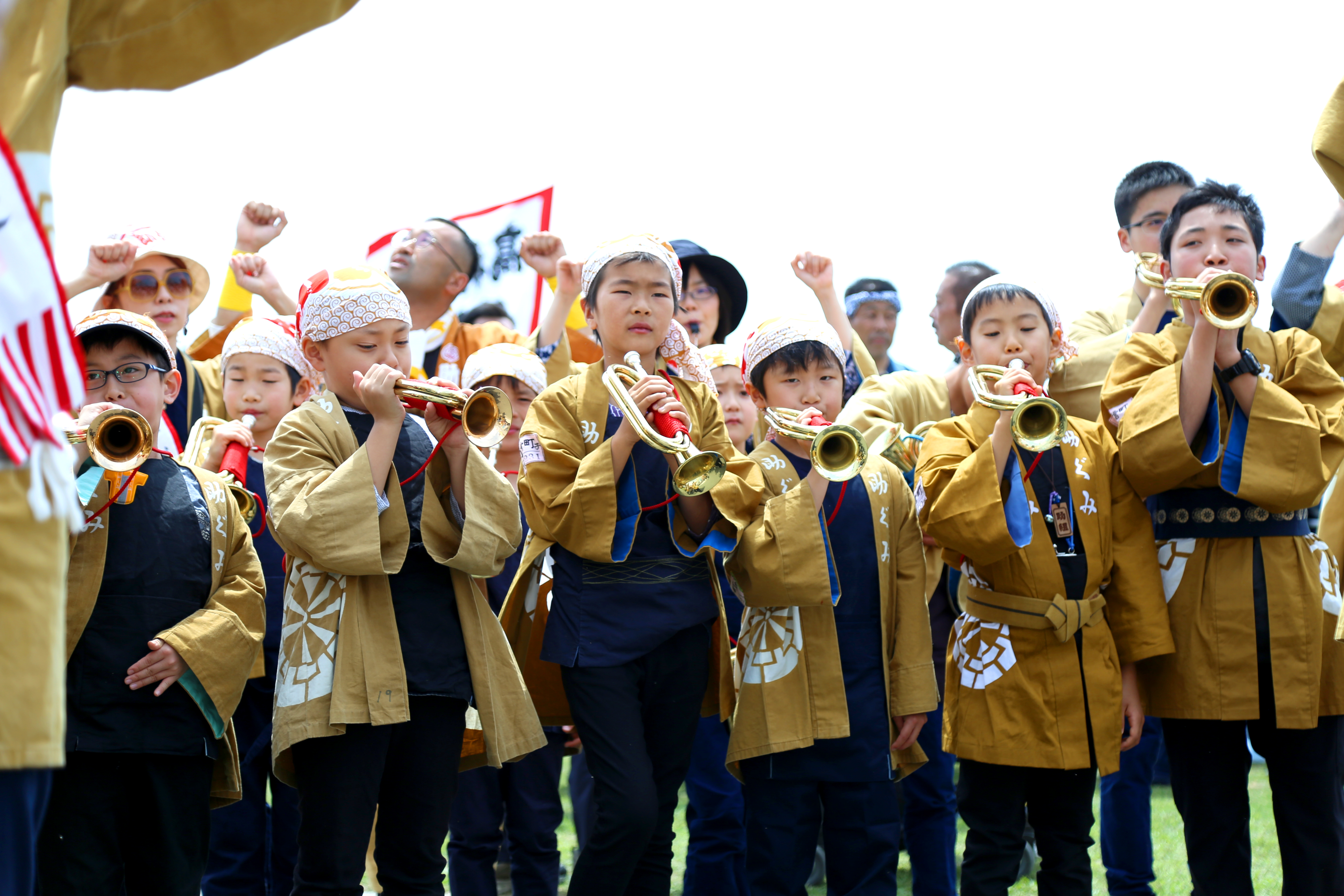2023.05.30
Hamamatsu Festival
The Hamamatsu Festival is held annually from May 3 to 5 by Hamamatsu City. It is one of the most popular festivals in Japan, with more than 2.55 million tourists having descended on Hamamatsu this year for its three day duration. In this blog post, we would like to introduce the festival, its music, and its sounds.
The Hamamatsu Festival is a citizens’ festival, it has no associations with Shinto shrines or Buddhist temples. Whilst the exact date when the festival began is unknown, some sources claim that it found its start roughly 450 years ago between 1558 and 1569. The festival is split into two parts: the daytime kite festival held at Ocean Beach Park with 170 local community participations, and the evening festival featuring parades and spectacular “Gotenyatai” floats which light the streets in downtown Hamamatsu. Gotenyatai are floats decorated with gorgeous carvings, curtains, and lanterns. Each community boasts its own Gotenyatai, detailed with elaborate carvings of dragons, lions, wind gods, thunder gods, and many more. Many spectators gather just to catch a glimpse of these gorgeous floats as they parade through the streets.


The glittering Gotenyatai floats
The festival is also filled with lively music – namely “Ohayashi”, a children’s musical accompaniment that enlivens the proceedings of Gotenyatai floats on the street, and the “Rappa”, a bugle corps that parades around the kite field and in the street. Ohayashi is a type of Japanese festival music consisting of flutes, taiko drums, bells, and shamisen guitars (the exact type of instruments varies from town to town). During the festival, they will play two or three tunes. Each community has own tradition passed down from generation to generation, with the same tune having variations in the rhythm, the taiko drumming method, and the accompanying calls between the local communities.




Some photos of Ohayashi here.
A Rappa corps forms a line while blowing each instrument to further enliven the momentum of the festival. The Rappa, also known as a bugle, has a very simple structure and contains no mechanism to change the pitch of the sound. Different notes are instead played by changing the shape of your lips as you blow.



Some photos of Rappa corps here.
Children performing Ohayashi or in Rappa corps have worked diligently in preparation for the festival day, including taking lessons from adults in the community. They not only relish the extraordinary experience of being the center of attention on the stage, but also they get to play their part in carrying the local traditions forward.
These three lively days in May are very special for the city and its citizens and will continue to attract many tourists, too.
The festival video is available here for your view with English subtitles.(13:10~)







